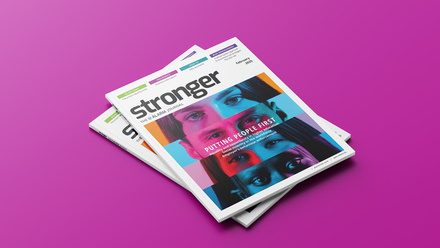Across the UK councils own nearly two million art works, ranging from medieval masterpieces to modern sculpture and street art. As these are of huge value to the nation as well as being valuable items in themselves, it is essential to have appropriate insurance.
When it comes to cover, specialist fine art insurance is worth considering. This is designed specifically for art collections and includes broader cover, reflecting the risks owners face.
Fine art insurance is standard across most museums and art galleries, but many councils include their art collection under their property insurance programme. Unfortunately, doing this can leave significant gaps in cover.
Under cover
While an organisation can claim from their property insurer for an artwork that is stolen or lost, if a piece is damaged, a property insurer is unlikely to offer access to specialist claims services or cover any depreciation due to the damage.
Depreciation in value can be as much as 50% of any fine art claims settlement. This can leave a significant shortfall and some potentially awkward conversations if an artwork is on loan to an organisation.
Similarly, if an organisation owns a pair of antique vases and one is broken or stolen, a property insurer will provide compensation for that one vase, overlooking the fact that the remaining vase has fallen in value as it is no longer part of a matching pair.
Specialist insurance
Fine art insurance is designed specifically for art collections. Cover can include restoration and depreciation in value following damage, matching pairs cover and defective title cover, which can compensate the organisation if an item bought from a reputable source turns out to be stolen. Works of art can also be covered in transit and for temporary removal.
Another key feature of this type of cover is the expert advice and support that’s available. Underwriters and brokers specialising in this area will tailor cover to an organisation’s needs, help with recommendations and offer specialist support in the event of a loss.
In spite of richer cover, it’s a myth that it’s more expensive. Fine art insurance can often be arranged at a similar cost, with the added peace of mind that the collection is insured correctly.
Real value
As well as having the right type of cover, it’s also essential to have an accurate valuation. Knowing what an organisation’s collection is worth is notoriously difficult but getting the figure wrong can have serious ramifications.
If an item is stolen or damaged, an organisation could find itself having to cover at least some of the cost of restoring or replacing it. This could damage its reputation, especially where it does not have adequate funds to do this.
This can also affect relationships with other museums and galleries. Lending art works between museums is commonplace. Another council might have an exhibit that complements one in your collection, or something that fits perfectly with a planned exhibition.
Valuation challenges
Organisations face several challenges when it comes to working out what a collection is worth. The value of a piece comes down to factors such as its rarity, desirability and its provenance.
On top of this, the art world can be incredibly fickle. Demand and fashions change, so values can fluctuate enormously. This makes it risky to rely on inflation linking to keep sums insured accurate over time.
The size of an organisation’s art collection can also make keeping tabs on its value a challenge. Collections are often large – with one local authority owning more than 250,000 items – and tend to be built up over the years, with some pieces bought and other bequeathed by the public.
Valuation tips
However large your collection, there are ways to achieve an accurate valuation.
These are our tips to making this task easier:
Focus on key works of art
Collections can contain thousands of works of art so valuing everything individually is likely to be an expensive and time-consuming project. In these situations, it’s sensible to focus on the most important and valuable pieces and extrapolate this across the collection.
Use your data
Where an item, or something similar, was recently bought or sold at auction, you will have an indication of its value. This figure can be used as a basis for your valuation, with an independent valuation able to confirm this figure.
Set up a rolling programme
Once you have an accurate valuation for the collection, establish a rolling programme to ensure the collection’s value reflects the current market trends. If you’ve worked with a professional valuer, they will often be happy to help: many will do a quick annual reassessment of the top ten or 20 items in your collection and alert you to any unusual movements in value for insurance purposes.
Having an ongoing valuation programme has further benefits too. Insurance companies view this proactive approach positively and, as the valuation is accurate, they have greater confidence following a loss that any claim can be settled quickly and efficiently.
Ensuring your organisation’s art collection is correctly insured, both in terms of the cover and the valuation, delivers the peace of mind that, if something does happen, you’re covered.
Aon’s specialist fine art division has many years’ experience arranging cover for private, corporate and public collections. To discuss your requirements, speak to your Aon account manager or contact James McDowell direct.


